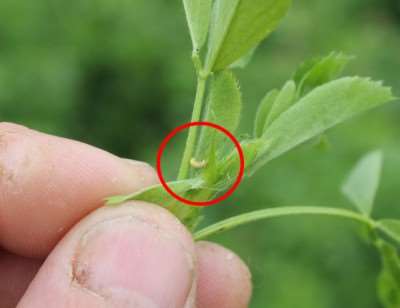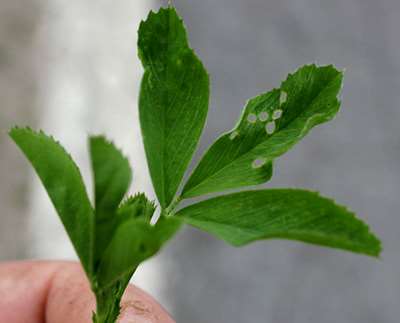By Bruce MacKellar
Alfalfa weevils are early season pests of alfalfa hay production. The larvae of the insect is a small, greenish caterpillar that has a yellow stripe on its back. The pest overwinters as adults, and adult feeding can be seen on the first warmer days of spring, particularly in protected areas of fields with southern slope exposure. The adults lay eggs in the stems, which begin to hatch around 250 growing degree-days (GDD) base 48 from the time they are laid. Early instar feeding appears as small shot-hole damage on the upper canopy of the plant.
It takes quite a few alfalfa weevils in a field to produce enough damage to warrant treatment with an insecticide, especially when the larvae are small. However, in recent years we seem to be reaching the treatment threshold more often than in the past. Michigan State University Extension field crops entomologist Christina DiFonzo outlined some of the reasons why in her 2009 article, “Alfalfa weevils are making a comeback this spring.”

Fig. Alfalfa weevil larvae
Treatment thresholds are reached when 40 percent of the plants are showing tip feeding, live larvae are present and you will not be able to harvest within six to seven days. Speeding up harvest is the preferred way with dealing with the pest, if possible, because it saves the cost of the insecticide application and can help preserve biological control organisms. It also helps to protect honey bees, particularly if some of the plants are in bloom.
